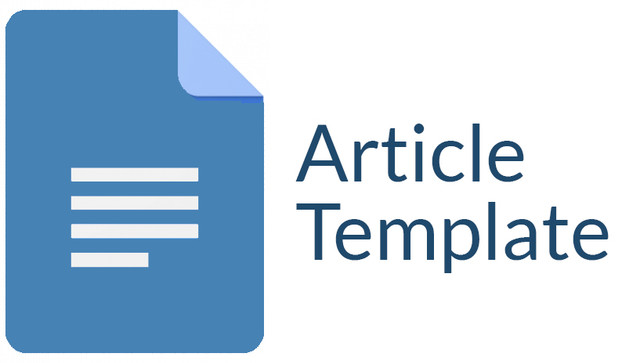Korelasi Antara Panjang Lengan Terhadap Kemampuan Passing Bawah Peserta Unit Kegiatan Mahasiswa Bola Voli Universitas Doktor Nugroho Magetan Tahun 2022
Keywords:
Arm length, volleyball, underhand passAbstract
The problem in this research is the skills of students of the Volleyball Student Activity Unit at Nugroho Magetan Doctoral University who are less effective when performing underhand passing. The purpose of this study was to determine the correlation between arm length and volleyball underhand passing skills. This study used a correlational method, the subjects were students who took part in the volleyball UKM at Nugroho Magetan Doctoral University in 2019, the population and sample were 25 students. This research instrument uses an anthropometer and bottom passing. Based on the results of the analysis, it was obtained that the correlation coefficient between arm length and underhand passing skills showed an rcount of 3.833 ≥ 1.714 rtable. Meanwhile, the correlation coefficient between arm muscle strength and lower passing skills shows an rcount value of 6.182 > 1.714 rtable. and the correlation coefficient between arm length and underhand passing skills shows a Fcount value of 20.967 > 3.443 Ftable. Because the results of Fcount are greater than F tables, so Ho is rejected, Ha is accepted and there is a significant relationship between arm length and underhand passing skills.
Downloads
References
Abdullah, Arman. & Mangi, Agus. (1994). Dasar-dasar pendidikan jasmani. Jakarta.
Arikunto.Suharsimi. 2006 . Prosedur Penelitian Suatu Pendekatan Praktik. Jakarta. Rineka Cipta
Marsini. (2021). INTEGRATION OF SOCIAL SCIENCES IN STUDENT CHARACTER EDUCATION BASED ON THE PANCASILA PROFILE. International Journal of Social Science, Educational, Economics, Agriculture Research and Technology 1(1).
Marsini. (2022). CONTRIBUTION OF SOCIAL SCIENCE IN THE FORMATION OF STUDENT CHARACTER BASED ON PANCASILA STUDENT PROFILE. International Journal of Social Science, Educational, Economics, Agriculture Research and Technology 2(1).
Marsini. (2023). THE ROLE AND POSITION OF SOCIAL SCIENCES ON CHARACTER EDUCATION IN THE INDEPENDENT CURRICULUM. International Journal of Social Science, Educational, Economics, Agriculture Research and Technology 2(5).
Marsini. (2023). THE INFLUENCE OF LEARNING FACILITIES ON SOCIAL SCIENCE LEARNING ACHIEVEMENT IN ELEMENTARY SCHOOL. International Journal of Social Science, Educational, Economics, Agriculture Research and Technology 2(6).
Marsini, M. (2023). The Effectiveness of the E-Library as a Learning Resource for Elementary School Students' Social Studies in Improving Literacy Skills. AL-ISHLAH: Jurnal Pendidikan, 15(3), 3726-3736.
Marsini, M. (2023). Motivasi Belajar Siswa pada Pembelajaran IPS di SDN Kraton VI Maospati. Jurnal Educatio FKIP UNMA, 9(1), 302-309.
Purwaningsih, L., Hadianti, A., & Marsini, M. (2022). PROTOTYPE DESIGN FLIPBOOK MEDIA IN TEACHING GRAMMAR “SIMPLE PAST TENSE”. Indonesian EFL Journal, 8(2), 287-294.
Nurhasan. 2001, Tes dan Pengukuran Dalam Pendidikan Jasmani, Direktorat Jendral Olahraga. Jakarta. Depdiknas.
Nuril, Ahmadi. (2007). Panduan olahraga bola voli. Surakarta: Era Pustaka Utama.
Soekarman.R. 1987. Dasar-dasar Olahraga Untuk Pembina, Pelatih, dan Pemain. Bandung. Alfabeta
Yunus.1992. Olahraga Pilihan Bola Voli. Jakarta. Depdikbud.
Yusup.Ucup. 2002. Kinesiologi. Departemen Pendidikan dan Kebudayaan Dirjen Pendidikan Dasar dan Menengah. Semarang.
Downloads
Additional Files
Published
Issue
Section
License

This work is licensed under a Creative Commons Attribution-ShareAlike 4.0 International License.
Authors who publish with this journal agree to the following terms:
1. Copyright on any article is retained by the author(s).
2. The author grants the journal, right of first publication with the work simultaneously licensed under a Creative Commons Attribution License that allows others to share the work with an acknowledgment of the work’s authorship and initial publication in this journal.
3. Authors are able to enter into separate, additional contractual arrangements for the non-exclusive distribution of the journal’s published version of the work (e.g., post it to an institutional repository or publish it in a book), with an acknowledgment of its initial publication in this journal.
4. Authors are permitted and encouraged to post their work online (e.g., in institutional repositories or on their website) prior to and during the submission process, as it can lead to productive exchanges, as well as earlier and greater citation of published work.
5. The article and any associated published material is distributed under the Creative Commons Attribution-ShareAlike 4.0 International License









